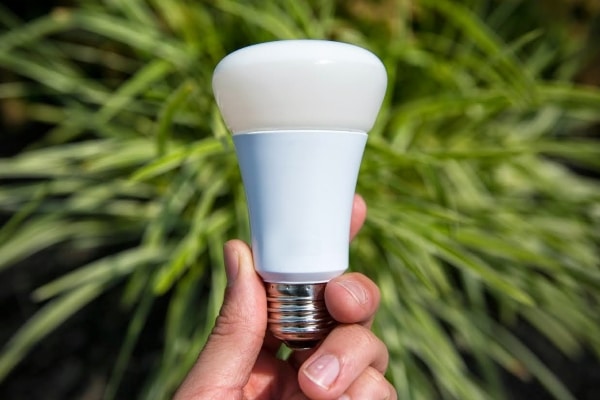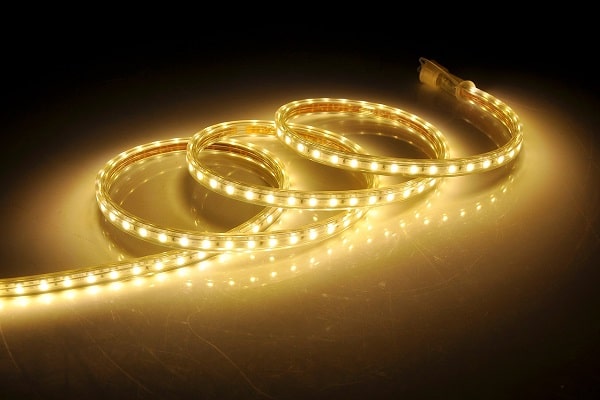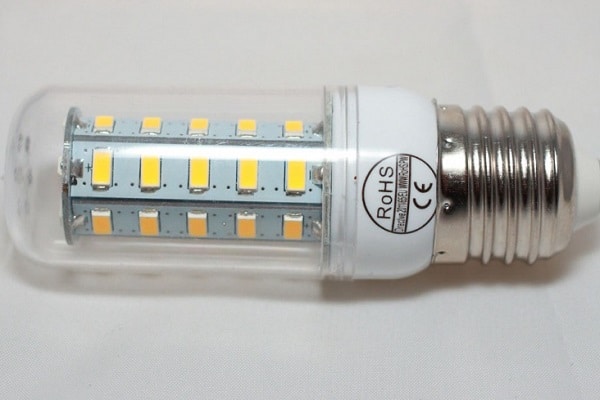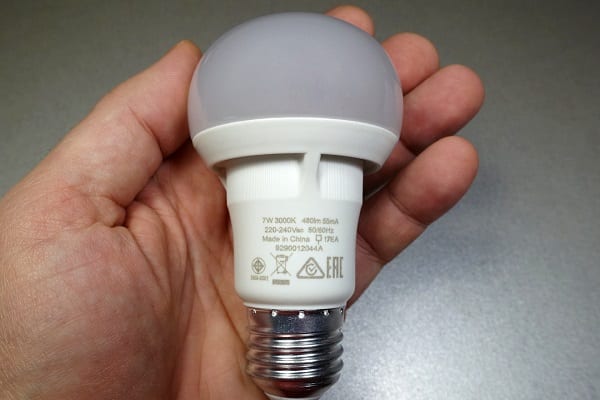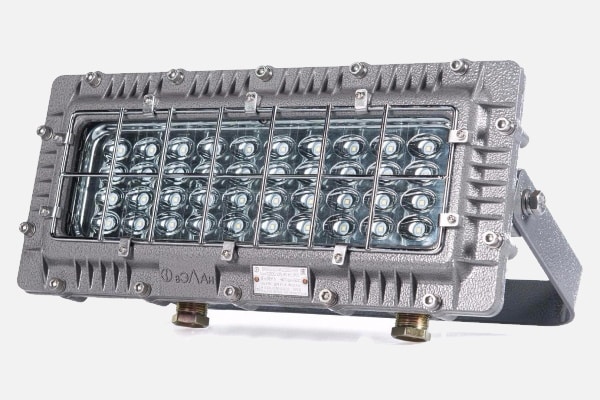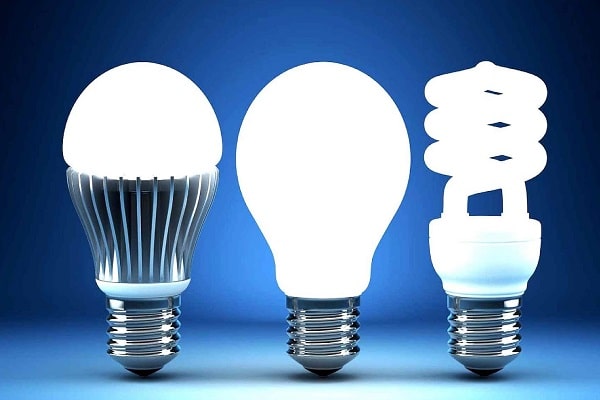The LED panel is a luminaire consisting of several LEDs and powered by a 220 V network. The LEDs are covered with a diffuser – a transparent or matte “plafond”. Proper selection of LED panels allows you to create a uniform and powerful lighting that makes the space comfortable, cozy and conducive to work.
- Where are LED panels used?
- How are lighting fixtures arranged?
- Varieties
- Pros and cons of using
- How to choose an LED panel?
- Brightness and Power
- Power type
- Colorful temperature
- Color rendering index
- The degree of dust and moisture protection
- Life time
- Light output
- Diffuser type
- Manufacturers and prices
- Mounting and connection methods
- concrete ceiling
- Fasteners in drywall
- Installation in a stretch ceiling
- How to connect multiple LED panels?
- How to calculate the number of LED panels for lighting a room?
- Common Mistakes
- Overview of popular models
Where are LED panels used?
LED panels are installed in large rooms. They give a diffused, uniform light and at the same time are characterized by low energy consumption.
LED panels are in demand in:
- factory shops;
- in warehouses;
- residential premises;
- shops and supermarkets;
- schools, clinics, hospitals, sports facilities;
- advertising structures;
- offices.
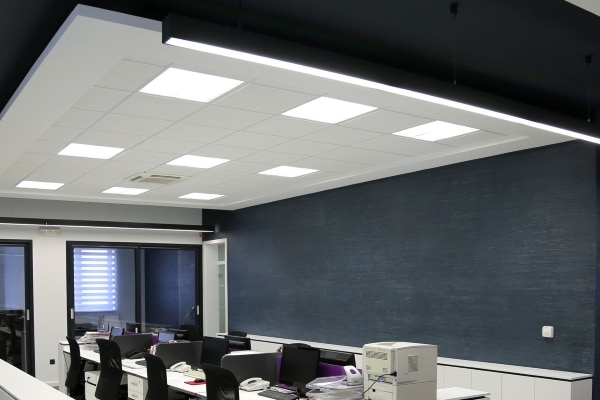
How are lighting fixtures arranged?
The LED panel is a lamp of a special design. It resembles a sandwich, as it is made of several layers. What is the LED panel made of?
- aluminum case;
- a light-conducting lens with laser notches, on which light from the lamps falls and is reflected from it;
- reflective film and diffuser, providing uniform light dispersion over the entire surface of the lamp;
- seal;
- acrylic optical element;
- LED line.
The structure is fixed to the ceiling with self-tapping screws, screws or dowel-nails. Stable operation of the lamp provides a stabilized power supply.
LED panels have a simple design. If you buy LEDs and all the necessary components, you can make an LED panel with your own hands.
Varieties
Manufacturers offer many varieties of LED panels. For ease of selection, they are classified according to different criteria.
According to the shape of the LED-panel are:
- round;
- rectangular;
- square.
The dimensions of the panels are very different, and their average thickness is 14 mm. The choice of form depends mainly on the design of the premises and the personal preferences of its owners.
According to the device and purpose, LED-panels are:
- Ceiling. They have replaced office lamps with fluorescent lamps. The panels are very thin, they can be installed in rooms with low ceilings. The service life of products is up to 20 years. The panels look beautiful on suspended and stretch ceilings.
- Advertising. The panels playing the role of billboards are made in the form of a screen. The LEDs on it are located similarly to the pixels in the monitor. They, filling the entire screen, create an image or background. The use of tri-color diodes makes it possible to obtain dynamic images.
Pros and cons of using
Before installing LED panels, it is useful to familiarize yourself with all their advantages and disadvantages. This will help to understand whether it is worth installing LED panels in each case.
Pros:
- economical energy consumption;
- variety of shapes and sizes;
- no mercury and heavy metals;
- practically do not heat up;
- instantly light up at full power;
- no pulsations;
- ease of installation;
- the possibility of implementing different design solutions by highlighting individual zones, changing the color of the glow, dimming;
- long service life – up to 35 thousand hours.
Minuses:
- you need a power supply for the LED panel that converts 220 V to 12 or 36 V;
- high price.
Installing LED panels can significantly reduce energy bills. At the same time, for example, a panel with a power of 40 W gives a luminous flux of 3,400 lm, which reduces the number of lighting units.
How to choose an LED panel?
To obtain optimal illumination for a given area, consider the parameters of the fixtures and their operating conditions. Some criteria are mandatory, others are optional, increasing the likelihood of the most successful choice.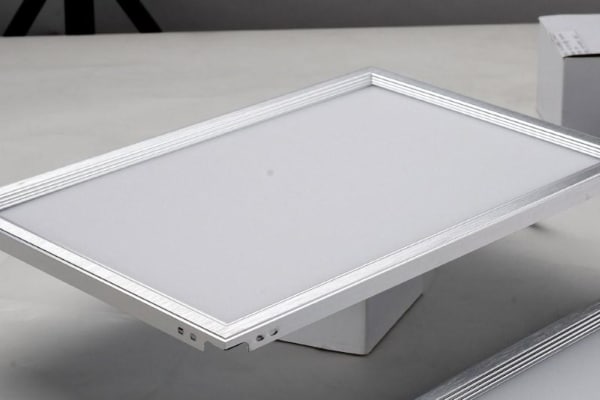
Brightness and Power
It is recommended to choose an LED panel not by power consumption, but by brightness, measured in Lumens. After all, the ultimate goal of purchasing a lamp is to obtain the desired level of illumination.
Determine the optimal number of Lumens, taking into account the number of lamps, the area of \u200b\u200bthe room, the features of the finish and other factors. It is recommended to use the services of a specialist who will make all the necessary calculations using a special program.
The ratio will also help you choose a lamp: 1,000 Lumens corresponds to the brightness of a 100 W incandescent lamp.
Power type
Most of the LED lamps have a 220 V or 12 V supply type. The former are more compact and more convenient to use. The second requires special power supplies – stabilizers, converters, drivers. 12V LED panels are considered safer and more reliable.
Colorful temperature
This parameter describes the shade of light emitted by the luminaire. Recommended values:
- for residential premises – a warm glow, 3,000 K;
- for offices, shops, enterprises – neutral glow, 4000-5500 K;
- utility and technical rooms – cold glow, 6,500 K.
Color rendering index
The parameter characterizes the veracity of displaying the color of objects under artificial lighting. The benchmark for comparison is natural sunlight. The worst color rendering is 1 CRI, the best is 100 CRI. Modern fixtures of good quality have an index in the range of 85-90.
The degree of dust and moisture protection
The IP index informs consumers about the protection of the LED panel from humidity and air pollution. Recommendations for the degree of protection against dust and moisture:
- living rooms and office premises – a minimum value of IP20 is sufficient;
- for bathrooms, bathrooms and other rooms with high humidity – IP44;
- for places where direct contact of lamps with water is possible – from IP65.
Life time
Panels from reliable manufacturers are assembled only from high-quality LEDs and components. Their service life is estimated at tens of thousands of hours. These LED panels come with a 2-year warranty.
Cheap products are assembled from the lowest quality LEDs and drivers. Such LED panels can fail after a few weeks of operation. They rarely give more than a year warranty.
Light output
The characteristic indicates the amount of light that a lamp gives off for every watt of electricity it uses. Light output determines the energy efficiency of luminaires and is measured in lm/W.
A modern LED lamp has a light output of 120-170 Lm/W. For comparison, an incandescent lamp has a light output of 10-20 Lm / W. The higher the light output, the more light the lamps give out at the same level of energy consumption.
Diffuser type
Diffuser – a special plexiglass, thanks to which the light is evenly distributed throughout the room. It also protects the eyes from direct light and serves as a decorative component. The most popular panels with prismatic and frosted glass.
Manufacturers and prices
All LED panels on the market can be divided into three large groups – imported, domestic and cheap Chinese products. Among Russian manufacturers, the products of LED-Effect, Optogan, Gauss deserve the most attention.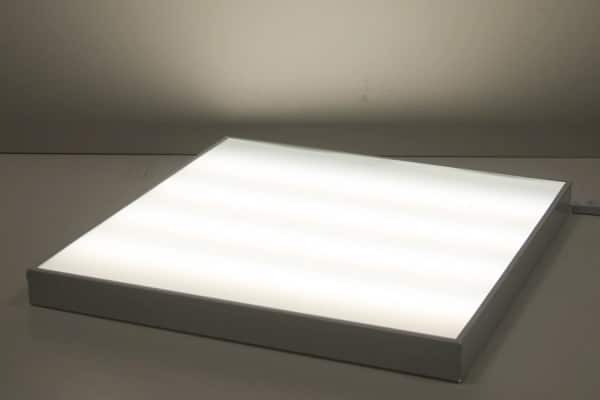
The most famous foreign manufacturers of LED panels:
- Japanese company Nichia;
- German brand SLV;
- Taiwanese firms Everlight Electronics and TG-Light Optoelectronic.
The cost of low-power LED-panels – from 400 rubles, powerful – from 1,500 rubles.
Mounting and connection methods
LED panels are installed on different surfaces – on concrete ceilings / walls, on tension and suspended structures. The main thing is to get acquainted with the algorithm of actions for each case.
concrete ceiling
The main fasteners for LED panels are suspensions, through which height adjustment is carried out. They usually come with fixtures. If not, you can buy pendants in the store.
Operating procedure:
- Make a mark on the ceiling.
- Fix the panel flush with the finishing material. To set the fixtures at the desired height, use linings – wooden or plastic.
- Attach the hangers with self-tapping screws – 3 pieces for each.
- Attach the panel to the cable using brackets (they are welded at the corners). Pass the cable through them and secure it with a clamp.
You can also buy steel corners – for fasteners. Install four pieces on the ceiling (in accordance with the markings) and on the corners of the panel. Fasten them with screws, as shown in the picture: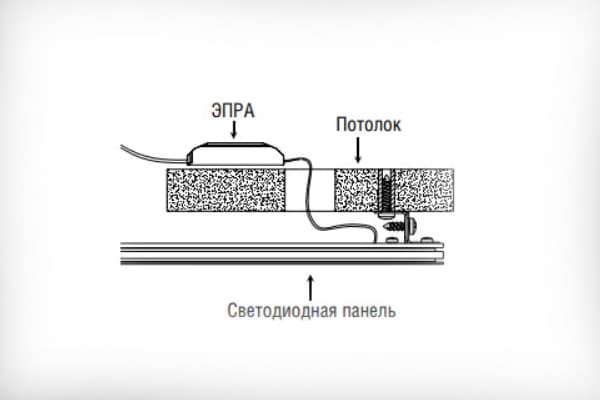
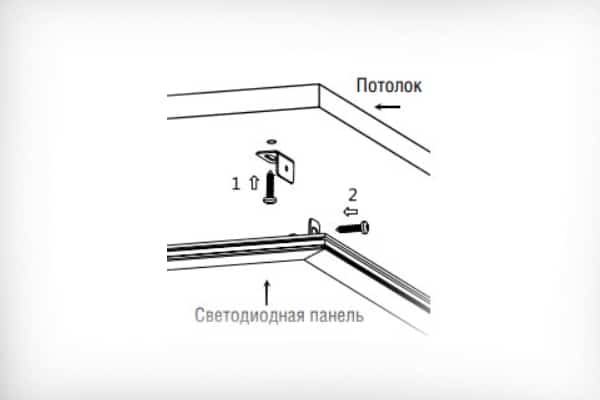
Choose the size of the corners taking into account the distance between the ceiling and the lamp.
Fasteners in drywall
LED panels are designed and made to fit into ceilings. There is no need to cut anything on drywall. The best option is to install on the base surface.
Operating procedure:
- Determine where to attach the panels.
- Install metal profiles – for the base.
- Attach the fixtures in the same way as they are installed on a concrete ceiling.
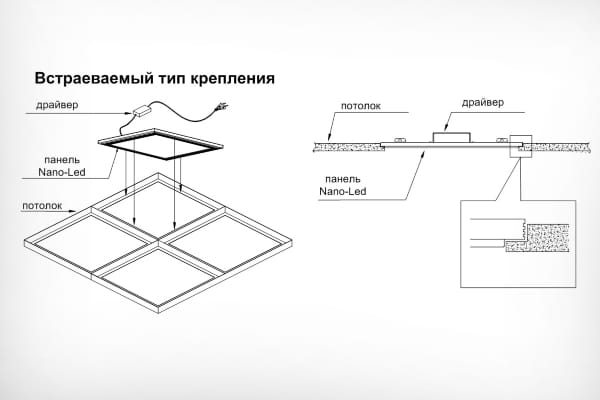
Installation in a stretch ceiling
LED panels are installed in stretch ceilings in two ways – with mounting brackets on springs or on cable suspensions (as on concrete ceilings). Consider mounting with brackets.
Operating procedure:
- Loosen the screws on the panel.
- Put the bracket on the spring and screw the screw into place.
- Fasten the bracket to the panel and all 4 fasteners.
- Connect the driver to the LED panel.
- Dot the canvas (under the mounting holes) and cut it out.
- Bend the clips, insert the panel into the cut out hole and fix it.
Video about the installation of LED panels in a stretch ceiling:
How to connect multiple LED panels?
By connecting several LED panels to each other, it is possible to facilitate the control of the luminous flux, since all the lamps are powered from the same source. Another plus is savings due to the lack of additional equipment.
Operating procedure:
- Decide on the number of LED panels.
- Calculate their total power.
- Buy the required number of wires – to connect to the transformer.
- Choose a power supply. Such that its power corresponds to the total indicator of all lamps plus 20%.
- Connect all devices in accordance with the developed scheme and rules for conducting electrical work.
- Turn on the power and check if the system is working properly.
Not always LED panels need to be placed on the ceiling. Several panels can be installed as additional lighting, for example, above a dining or work table.
How to calculate the number of LED panels for lighting a room?
The value of the luminous flux for a given room is calculated by the formula X*Y*Z, where:
- X is the standard illumination rate in Lux (Lx);
- Y is the area of the room (sq. m);
- Z is a coefficient depending on the height of the ceilings.
Z value:
- up to 2.7 m = 1;
- from 2.7 to 3 m = 1.2;
- from 3 to 3.5 m = 1.5;
- from 3.5 to 5.5 m = 2.
Illumination standards can be seen in the table:room Panel power per 10 sq. m Living room thirty Bedroom, corridor twenty Kitchen 40 Children’s fifty Utility rooms ten
Common Mistakes
When switching to LED lighting, many consumers make a variety of mistakes. This leads to unnecessary costs and does not achieve the desired effect.
Typical mistakes:
- Incorrect color temperature selected. For offices, it is better to choose “cold” light (from 5,000 K). It stimulates the brain. For residential premises, buy lamps with “warm” light (2,700-3,500 K). It relieves stress, creates a cozy atmosphere.
- Incorrect connection. Errors in connecting networks and additional devices lead to flickering, buzzing and other malfunctions. If the lamps are off, the neutral wire may not be grounded, or the ground resistance may be too high.
- Insufficient heat dissipation. Overheating will shorten the service life. The reasons are plastic radiator grilles on powerful lamps, insufficient ventilation and excessively high air temperature in the room.
- Trust in relation to the specified characteristics. Many manufacturers, wanting to attract buyers, overestimate the characteristics of products. A common situation is when a lamp is credited with a larger equivalent of power. Buy panels with a power reserve – 20-30 percent.
- Buying too cheap panels. Not only the correct operation of the device, but also its service life depends on the quality of the LEDs and components. When buying cheap LED panels, you run the risk of purchasing products that will quickly fail.
Overview of popular models
Manufacturers offer LED panels of various shapes and sizes, differing both in appearance and technical characteristics.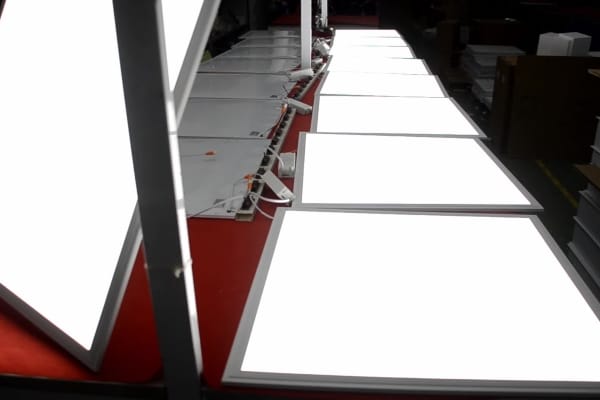
Popular LED panels:
- IEK DVO 1610. Round panel with plastic cover and metal fittings. Diameter – 295 mm. Color – cold, power – 24 watts. The country of origin is China. Price — 1 950 rubles.
- Wolta PRO Office with BAP Matt DV001-36-041-5K. Universal square panel. The body is made of sheet steel. There are two types of diffuser – microprismatic and matte. Country of origin – Russia. Price — 8 500 rubles.
- Uniel ULP-18120, 36W/3950K/EMG, IP40. Overhead rectangular panel with acrylic shade. Country of origin – Russia. Luminous flux – 5 250 Lm. Power – 42 watts. Price – 11,050 rubles.
- LEDELL L – School 55/32-48/D/5. Rectangular ceiling panel with a natural white glow. Service life – 100,000 hours. Plafond made of polycarbonate. Country of origin – Russia. Price — 9 100 rubles.
- Philips DN027B G2 LED9/NW L125. Round panel with fittings and plastic shade. Color temperature – 4000 K. Power – 10 watts. The country of origin is China. Price – 500 rubles.
LED panels have many advantages over traditional lighting fixtures. The technologies used in their production make it possible to obtain powerful and inexpensive light. LED panels in any interior look stylish and modern, and their application is universal – they are suitable for rooms of various purposes.

